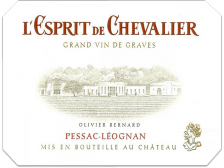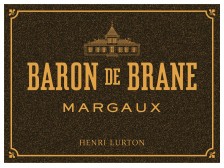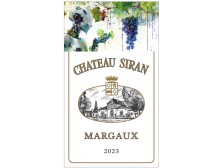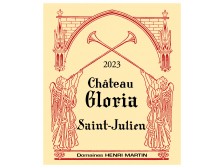2024 Futures
For each vintage and each appellation, there are always wines that distinguished themselves by being cheaper than others with the same quality level, or by being far better than others in the same range of prices.
These “best values for money” of the current vintage are highlighted in this category.
- 7988
The star of Graves blancs, offering each vintage a very pure and straightforward wine, discreetly woody. It is not surprising to see this regularity in performance, as it is the own property of Florence & Denis Dubourdieu, hence the name of the wine.
More- To keep or to drink:
- Available early 2026
- Blend:
- 62 % Sémillon, 38 % Sauvignon blanc
- 7989
Family property of the Dubourdieu family. Always very bouquety and expressive, round with buttered notes, perfect to accompany a cheese platter.
More- To keep or to drink:
- Available early 2026
- Blend:
- 100% Sauvignon
- 7996
Known to produce Léognan's most voluminous and expressive white wine, Larrivet Haut-Brion has gained in freshness, precision and aromatic complexity since the arrival of Mr Lemoine (cellar master from Montrose), advised by Mr Derenoncourt, and vinifications in ovoid vats.
More- To keep or to drink:
- Available early 2026
- Potential alcohol:
- 13.60%
- Blend:
- 95% Sauvignon blanc, 5% Sémillon
- 7998
With near-maniacal intransigence at every stage of its development, the Bonnie family delights us with each vintage with its white wine, very Sauvignon (80 to 90%), combining energy, supreme finesse and exemplary straightness.
More- To keep or to drink:
- Available early 2026
- Blend:
- 80% Sauvignon, 20% Sémillon
- 8002
In white, Domaine de Chevalier produces a model unique among its peers, made of tension, vivacity and energy. Its mineral side and its capacity to age (30 years and more) bring it closer to the greatest Burgundy whites.
More- To keep or to drink:
- Available early 2026
- Potential alcohol:
- 14%
- Blend:
- 70% Sauvignon blanc, 30% Sémillon
- Organic certification:
- 2023
- 8008
Administered by the Rothschilds (Mouton) since 1996, Coutet has joined the leading pack of the biggest Sauternes after Yquem. Like Climens, it is a true Barsac, pure and remarkably subtle, but with a more marked liquor. Since 2005, Coutet has been in great shape! In a rare feat, the exceptional 2020 vintage came top (ahead of Yquem) in the Revue du Vin de France's ranking of Sauternes 2020 « un sommet de pureté, de précoce harmonie, de naturel ! ».
More- To keep or to drink:
- Available early 2026
- Potential alcohol:
- 13.5%
- Blend:
- 95% Sémillon, 4% Sauvignon blanc, 1% Muscadelle
- 8009
Doisy-Daëne may never be the sweetest wine in its sector, but its expression and aromatic refinement are unrivalled. A pure Barsac, brilliantly orchestrated by Denis Dubourdieu until 2016. The 2014 vintage was rated 94-96/100 by the Revue du Vin de France « with pure fruit and generous liquor, it is balanced by the finesse and minerality of the soil »; 96/100 for the 2016 vintage « sparkling, crystal-clear fruit, the pure character of the Barsac terroir ».
More- To keep or to drink:
- Available early 2026
- Blend:
- 80% Sémillon, 20% Sauvignon
- 8016
A 6 ha property (92% Merlot) acquired in 2011 by Mr. Thienpont (Pavie-Macquin, Larcis-Ducasse...). After a break-in period, Alcée takes off in 2016, standing out from its neighbours by its emphasis on finesse, minerality and distinction. A wine with more length than breadth.
According to the Guide Bettane & Desseauve 2025, “Alcée has become the favourite vintage of wine lovers looking for excellent value among Bordeaux wines”.
More- To keep or to drink:
- Available early 2026
- Potential alcohol:
- 14.5%
- Blend:
- 88% Merlot, 12% Cabernet Franc
- 8017
A 4 ha plot selection from Château Rigaud, La Mauriane is not yet another luxurious cuvée on the right bank but a wine built on fine grain tannins where the brilliance and precision of the fruit prevail. A true gem in the right bank !
More- To keep or to drink:
- Available early 2026
- Organic certification:
- 2012
- 8019
Since its acquisition in 1998 by Mr. De Neipperg (Clos de l'Oratoire, Canon-La Gaffelière, La Mondotte), d'Aiguilhe has been part of the new generation of very ambitious wines that bring the appellation of the Côtes de Castillon to a new level. It has just won a second star in the 2023 guide of the Revue du Vin de France.
More- To keep or to drink:
- Available early 2026
- Blend:
- 90 % Merlot, 10 % Cabernet franc
- 8020
Les Trois Croix is the personal property of Mr. Léon, who was technical director of Mouton-Rothschild for more than 20 years. He is dedicated to producing straightforward, digestible Fronsacs, among the most elegant and distinguished in the sector. The dresses are not the darkest but the power and harmony are there. In confidence!
More- To keep or to drink:
- Available early 2026
- Potential alcohol:
- 14.5%
- Blend:
- 83 % Merlot, 17 % Cabernet franc
- 8024
Under the leadership of M. Thunevin (Valandraud), La Vieille Cure presents a more greedy and less square profile than before and reveals itself as one of Fronsac's major properties.
More- To keep or to drink:
- Available early 2026
- Potential alcohol:
- 14.5%
- Blend:
- 75% Merlot, 20% Cabernet franc, 5% Cabernet sauvignon
- 8028
With 12 hectares cultivated in biodynamic farming, certified since the 2007 vintage, Clos Puy-Arnaud is one of the great Côtes de Castillon wines that have nothing to envy to neighbouring Saint-Émilion.
Uncompromising, the great wine that has made the estate's reputation is an authentic cuvée, straightforward, deep and made for laying down.More- To keep or to drink:
- Available early 2026
- Potential alcohol:
- 14%
- Organic certification:
- 2009
- 8033
L'Esprit de Chevalier follows the same path as a great wine: an increasingly fine structure, a remarkable qualitative evolution in recent vintages, and an ever-relevant quality-price ratio.
More- To keep or to drink:
- Available early 2026
- Potential alcohol:
- 13%
- Blend:
- 65% Cabernet sauvignon, 30% Merlot 30 %, 5% Petit verdot
- Organic certification:
- 2024
- 8040
Mr. Derenoncourt's arrival as a consultant in 2006 has given the Domaine de Chevalier an extra touch of charm and softness, while preserving its distinguished finesse. Its success has been dazzling in recent vintages, gradually raising it to the pinnacle of the appellation.
More- To keep or to drink:
- Available early 2026
- Potential alcohol:
- 13%
- Blend:
- 65% Cabernet sauvignon, 25% Merlot, 5% Petit verdot, 5% Cabernet franc
- Organic certification:
- 2024
- 8041
Since 1985, Pape Clément has magnificently combined the bouquet and natural finesse of the Graves with the power of its terroir (comparable to that of the greatest Pauillac wines). It is undoubtedly one of the super seconds on the left bank, what is confirmed by the marks attributed to its latest vintages.
More- To keep or to drink:
- Available early 2026
- Blend:
- 50% Merlot, 45% Cabernet sauvignon, 3% Cabernet franc, 2% Petit verdot
- 8047
Haut-Brion is the most famous of all the Bordeaux growths, having twice been classified as 1er grand cru, in 1855 and again in 1959 (Graves classification). Haut-Brion is both the oldest of the Grands Crus, with more than five centuries (since 1509) behind it, and the most innovative, introducing stainless steel vats as early as 1960 and green harvesting as early as 1980.
Its particular situation within the Bordeaux agglomeration makes it the earliest Premier Cru on the left bank, a clear advantage in less mature vintages. For this reason, Haut-Brion's consistency is a benchmark for the whole of Bordeaux, with the intense bouquet of fresh earth, smoke and pine resin so characteristic of the appellation.
Fortunately, the unique silhouette of its bottle has disrupted the Asian market and has not triggered the same speculative interest there as it has for the other 1er grands crus classés. Haut-Brion is today without question the most qualitative and the least expensive of the premiers.More- To keep or to drink:
- Available early 2026
- Potential alcohol:
- 14.5%
- Blend:
- 52,3% Merlot, 38,6% Cabernet sauvignon, 9,1% Cabernet franc
- 8048
A family property since the 1950s, the arrival of a new generation has awakened this 32-hectare cru bourgeois in Cussac-Fort-Médoc, between Saint-Julien and Margaux. Revealed in 2012, du Retout climbs another notch in 2018 and 2019 with enthusiastic, sincere and tasty Haut-Médoc, full of fruit and carried by fresh tannins. Congratulations!
More- To keep or to drink:
- Available early 2026
- Potential alcohol:
- 13.05%
- Blend:
- 80% Cabernet Sauvignon, 20% Merlot
- 8049
Second wine of Clos Manou, the Médoc as we like it: generous, sweet and balanced by a good vivacity. A real treat!
More- To keep or to drink:
- Available early 2026
- Potential alcohol:
- 13.95%
- Blend:
- 52% Merlot, 42% Cabernet sauvignon, 3,5% Petit verdot, 2,5% Cabernet franc
- 8052
Vinified in the cellars of Ch. Ducru-Beaucaillou, this cuvée benefits from the best care. Its higher proportion of Merlot (68%) makes it a wine of pleasure, gourmet and quickly enjoyable.
More- To keep or to drink:
- Available early 2026
- Blend:
- 59% Merlot, 37% Cabernet Sauvignon, 4% Petit Verdot
- 8053
With remarkable consistency, Potensac has been one of the most regular crus bourgeois in the northern Médoc for 30 years, proof of the know-how of the Léoville-Las Cases team (same owner). Its ability to age is always surprising, even and especially in the "early years".
More- To keep or to drink:
- Available early 2026
- Potential alcohol:
- 13.40%
- Blend:
- 48% Cabernet Franc, 35% Merlot, 17% Cabernet Franc
- 8054
The incessant work of Mr. and Mrs. Dief since 2000 is bearing fruit today: in a tense and distinguished style, Clos Manou shines with a vibrant, deep energy, with pure and radiant fruit, combining length and density. Undoubtedly the most beautiful revelation of the northern Médoc in recent vintages.
More- To keep or to drink:
- Available early 2026
- Potential alcohol:
- 13.20%
- Blend:
- 70% Cabernet sauvignon, 22% Merlot, 8% Petit verdot
- 8061
A small estate (12 ha), carefully tended and vinified with constant regularity, Deyrem Valentin is one of the most typical Margaux crus. Distinguished by the Revue du Vin de France among the hidden nuggets of the Médoc, "its Margaux wines draw a delicious balance".
Promoted to "Cru Bourgeois Supérieur" in 2020.
More- To keep or to drink:
- Available early 2026
- Potential alcohol:
- 14.5%
- 8062
Second wine of Brane-Cantenac, Baron de Brane demonstrates even more than his big brother the progress made in this château over the last 15 years. With a silky smooth 2016, deliciously crisp and juicy on the finish, Baron de Brane is now more than a second wine, it is a brand in its own right!
More- To keep or to drink:
- Available early 2026
- Potential alcohol:
- 13,8%
- Blend:
- 48% Cabernet Sauvignon, 43% Merlot, 7% Cabernet Franc, 1% Carménère, 1% Petit Verdot
- 8063
Even though it is not classified, Siran has been in competition with the classified growths of Margaux for the last ten years, with wines that are at once delicate, firm and full-bodied with age. Aligning successes since 2015, Siran is now at its best, 2020 being its best vintage ever and hailed as such by the Revue du Vin de France: « réussite majeure pour le cru », rated 95/100.
More- To keep or to drink:
- Available early 2026
- Potential alcohol:
- 14%
- Blend:
- 49% Merlot, 41% Cabernet Sauvignon, 10% Petit Verdot
- 8072
Under the direction of Henri Lurton, Brane-Cantenac has gained in recent years in fullness and density and has become one of the leading growths of the appellation along with Palmer and Rauzan-Ségla and even the most authentically Margalese of them all. Let there be no mistake, behind a typically Margalaise elegance and delicacy that encourages tasting it too young, Brane-Cantenac needs time to blossom and reveal itself.
More- To keep or to drink:
- Available early 2026
- Potential alcohol:
- 13.5%
- Blend:
- 77% Cabernet Sauvignon, 20% Merlot, 1% Cabernet Franc, 1% Carménère, 1% Petit Verdot
- 8077
Second wine of Lagrange, of an incredible regularity in its quality as in its prices. This classic is an ideal "core of the cellar"!
More- To keep or to drink:
- Available early 2026
- Blend:
- 46% Cabernet sauvignon, 41% Merlot, 13% Petit verdot
- 8078More
- To keep or to drink:
- Available early 2026
- Potential alcohol:
- 13,16%
- Blend:
- 56 % Merlot, 41 % Cabernet Sauvignon, 3 % Petit Verdot
- 8079
Second wine of Gruaud-Larose. In a rather powerful and tight register, Sarget is a serious and convincing Saint-Julien, with substance, at its best after 5 to 7 years of ageing.
More- To keep or to drink:
- Available early 2026
- Potential alcohol:
- 12.5%
- Blend:
- 52% Cabernet sauvignon, 40.5% Merlot, 4% Cabernet franc 4%, 3.5% Petit verdot
- Organic certification:
- 2022
- 8081
The best cru bourgeois of Saint-Julien (it could easily have been classified in 1855), kept by the Saint-Pierre team, even owner, and in very good shape in the last vintages. The Médoc's best value par excellence.
More- To keep or to drink:
- Available early 2026
- Potential alcohol:
- 13.3%
- Blend:
- 50% Cabernet sauvignon, 35% Merlot, 10% Petit verdot, 5% Cabernet franc
- Organic certification:
- 2024































